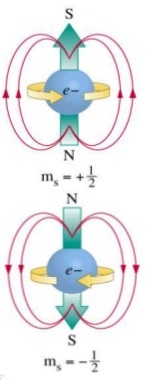What is Magnetism?
Magnetism is the study of magnetic fields and their effect on materials. The effect is due to unbalanced spin of electrons in atom. It is readily observed every day from the simple magnet that attracts nails and other metals to cassette tapes to magnet-driven trains. In terms of applications, magnetism is one of the most important fields in physics. Large electromagnets are used to pick up heavy loads. Magnets are used in such devices as meters, motors, and loudspeakers. Magnetic tapes and disks are used routinely in sound-and video-recording equipment and to store computer data.Intense magnetic fields are used in magnetic resonance imaging (MRI) devices to explore the human body with better resolution and greater safety than x-rays can provide.

It is now believed that magnetism is due to the spin of electrons within the atoms. Since the electron is a charged particle, the concept implies that magnetism is a property of a charged particle in motion. The power of attraction of a magnet depends on the arrangement of the atoms. All atoms are in themselves tiny magnet formed into groups called DOMAINS. The magnetic strength is increased if the domains are induced to fall into line by the action of another magnet.
The properties of naturally occurring magnets also called magnetites have been known for over 2,000 years. Several studies on magnetism were made, but the first thorough investigation was done by William Gilbert in 1600. Experimental results led to the discovery of the many properties of natural and artificial magnets.
- Magnets usually have two poles.
- The end of the magnet which points north when magnet is free to turn on a vertical axis is the north-seeking pole, simply the N pole.
- The opposite end which points south is the south-seeking pole or S pole.
- Magnets come in many shapes and sizes, but each has at least two poles.
- If you cut a magnet into pieces, every piece will still have at least two poles.

What is Magnetic Field
A magnetic field is the magnetic effect of electric currents and magnetic materials. The magnetic field at any given point is specified by both adirection and a magnitude (or strength); as such it is a vector field. The term is used for two distinct but closely related fields denoted by the symbols B and H, where H is measured in units of amperes per meter (symbol: A·m−1 or A/m) in the SI. B is measured in teslas (symbol:T; note that although the symbol is capital T, “tesla” is written in lower case in the SI system) and newtons per meter per ampere (symbol: N·m−1·A−1 or N/(m·A)) in the SI. B is most commonly defined in terms of the Lorentz force it exerts on moving electric charges.

Magnetic fields can be produced by moving electric charges and the intrinsic magnetic moments of elementary particles associated with a fundamental quantum property, their spin. In special relativity, electric and magnetic fields are two interrelated aspects of a single object, called the electromagnetic tensor; the split of this tensor into electric and magnetic fields depends on the relative velocity of the observer and charge. In quantum physics, the electromagnetic field is quantized and electromagnetic interactions result from the exchange of photons.
In everyday life, magnetic fields are most often encountered as a force created by permanent magnets, which pull on ferromagnetic materials such as iron, cobalt, or nickel, and attract or repel other magnets. Magnetic fields are widely used throughout modern technology, particularly in electrical engineering and electromechanics. The Earth produces its own magnetic field, which is important in navigation, and it shields the Earth’s atmosphere from solar wind. Rotating magnetic fields are used in both electric motors and generators. Magnetic forces give information about the charge carriers in a material through the Hall effect. The interaction of magnetic fields in electric devices such as transformers is studied in the discipline of magnetic circuits.
Discover more from Electrical Engineering 123
Subscribe to get the latest posts sent to your email.

